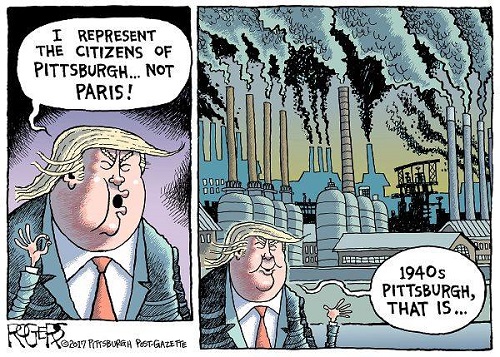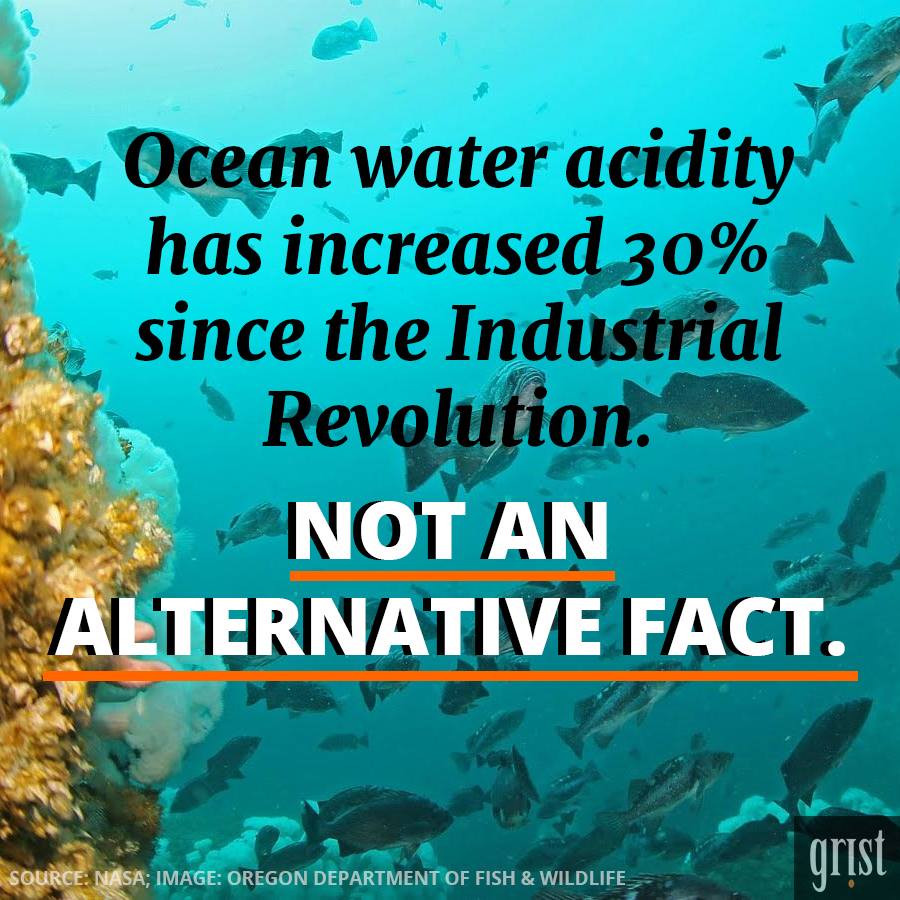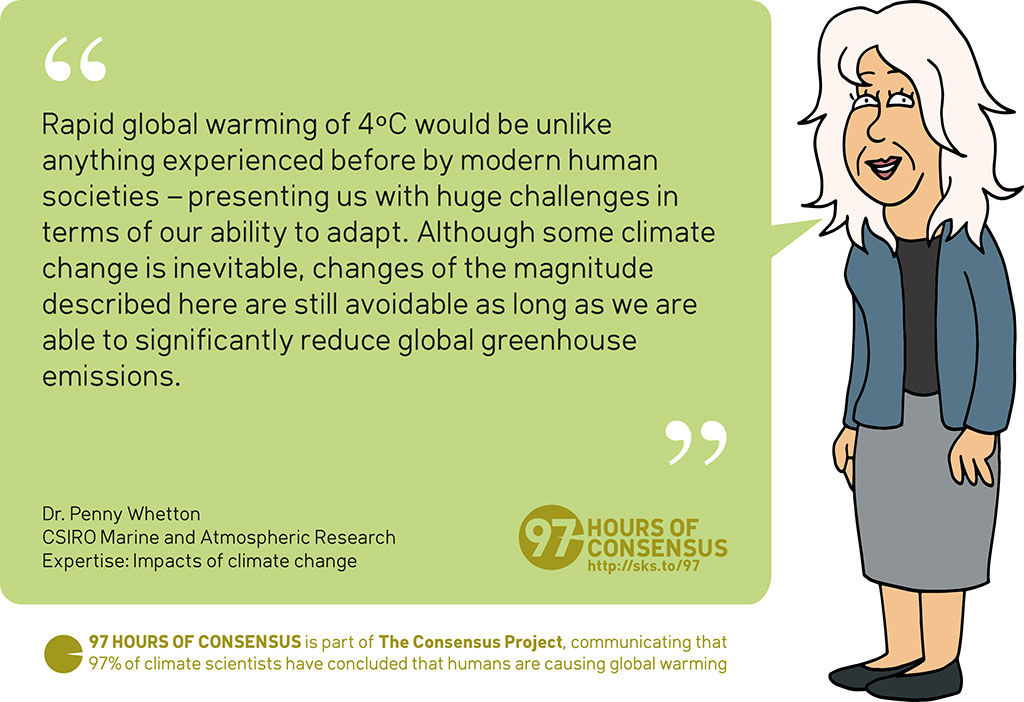2017 SkS Weekly Climate Change & Global Warming Digest #28
Posted on 16 July 2017 by John Hartz
Story of the Week... El Niño/La Niña Update... Toon of the Week... SkS in the News... Coming Soon on SkS... Poster of the Week... Climate Feedback Reviews... SkS Week in Review... 97 Hours of Consensus...
Story of the Week...
Seven charts show why the IEA thinks coal investment has already peaked
Global investment in coal-fired power plants is set to decline “dramatically” after passing an all-time high during the past several years, says the International Energy Agency (IEA).
That’s one of the most striking messages from World Energy Investment 2017, published today. The report, now in its second year, offers a comprehensive picture of energy investment from fossil-fuel extraction through to transport, energy efficiency and power networks.
The IEA report is not only backwards looking, reporting money already invested. It also offers a glimpse of forthcoming trends, by reporting the value of decisions taken to invest in future.
Overall, investment fell again last year, as the oil-and-gas sector continued to cut back in response to low prices. Steady investment in renewables, along with falling costs, saw 50% more capacity being added in 2016 than in 2011. But gains for low-carbon wind and solar are being offset by declines in hydro and nuclear.
Carbon Brief has seven charts with the key messages from this year’s energy investment report.
Seven charts show why the IEA thinks coal investment has already peaked by Robert McSweeney, Carbon Brief, July 11, 2017
El Niño/La Niña Update
The latest ENSO forecast by CPC/IRI is holding steady since last month and favoring ENSO-neutral conditions (50-55% chance) into the winter of 2017-18. Although not favored, El Niño development has an elevated chance of occurring (~35-45%) relative to the long-term average (~25-35%), so we still need to keep our eyes on this possibility.
July 2017 ENSO update: Holding steady by Nat Johnson, ENSO Blog, NOAA's Climate.gov, July 13, 2017
Toon of the Week...

SkS in the News...
[To be added.]
Coming Soon on SkS...
- 2017 SkS Weekly Climate Change & Global Waming Digest (John Hartz)
- Reflections on the politics of climate change (How Trump informs us about climate denial) – part 2 (John Abraham)
- As Trump pulls out of the Paris Agreement, remember: We've seen this before (Benjamin Franta)
- Scott Pruitt wants to take climate science into The Matrix (Dana)
- Is energy ‘dominance’ the right goal for US policy? (Daniel Raimi)
- ClimateChats: Climate Pictures (Adam Levy)
- 2017 SkS Weekly Climate Change & Global Warming News Roundup (John Hartz)
Poster of the Week...

Climate Feedback Reviews...
Climate Feedback asked its network of scientists to review the article, Nearly All’ Recent Global Warming Is Fabricated, Study Finds by James Delingpole, Brietbart News, July 9, 2017.
Seven scientists analyzed the article and estimate its overall scientific credibility to be 'very low'. A majority of reviewers tagged the article as: Biased, Inaccurate, Misleading.
Review Summary
This Breitbart article by James Delingpole claims that the observed warming of Earth’s surface temperatures is largely a fabrication by scientists who have altered the measurements. The source for this claim is a document written by three individuals who have no track record of publishing scientific research on the topic, and have not submitted their work to peer-reviewed scientific journals, but simply uploaded a pdf on a wordpress blog.
Scientists who reviewed the article found that its claims are false and misleading. Data are indeed adjusted to accurately account for things like changes in the instruments used to make measurements or the relocation of weather stations. However, the impact of these adjustments on the global temperature record is actually small, and the warming trend of the last century would appear to be larger without the adjustments, in contradiction with the claims in the Breitbart article.
Click here to acess the entire review.
SkS Week in Review...
- 2017 SkS Weekly Climate Change & Global Warming News Roundup #28 by John Hartz
- Study: On climate change and elsewhere, politicians more conservative than citizens by Dana Nuccitelli (Bulletin of the Atomic Scientists)
- Planet Hacks: Food , Video by Climate Adam
- Those 80 graphs that got used for climate myths by Ari Jokimäki
- Conservatives are again denying the very existence of global warming by Dana Nuccitelli (Climate Consensus - the 97%, Guardian)
- 2017 SkS Weekly Climate Change & Global Warming Digest #27 by John Hartz
97 Hours of Consensus...
































 Arguments
Arguments






























This is an interesting eye opener, related to the coal issue:
www.pressreader.com/new-zealand/new-zealand-listener/20170714/textview
The relevant article in the link is "The new war on carbon". It starts with the views of Mark Carney, (governer bank of england), it discusses how much carbon can be burned / needs to be left in the ground, the known reserves on fossil fuel companies balance sheets, the risks of this with stranded assets.
This is slightly old material, but whats more interesting is the recent response of the corporate, financial and investment community, and how they are already starting to pull investments out of fossil fuel companies. Shareholders are starting to exert pressure on boards, and where they put investments.
And related / similar articles:
www.ft.com/content/622de3da-66e6-11e5-97d0-1456a776a4f5
www.theguardian.com/environment/2015/sep/29/carney-warns-of-risks-from-climate-change-tragedy-of-the-horizon
www.bankofengland.co.uk/publications/Pages/speeches/2015/844.aspx
This may be off-topic, but it may also be related to global warming.
Last night I saw the brightest and most extensive noctilucent clouds I have seen so far this summer. Here in south-eastern Norway the sun is only about 8-9° below the horizon at midnight right now, so these very thin ice crystal clouds in the upper mesosphere (75-85 km altitude) remain illuminated by the sun throughout the night. It appears that these clouds, which were unknown to the science before 1885, have become more common during the 20th century (I have seen them several times in recent years), so they may be linked to global warming.
One possible link is that the increased greenhouse effect cools the stratosphere and mesosphere, making one of the necessary conditions (temperatures below -120°C) more common than before. Another possible link is increased amount of water vapour formed by the oxidation of methane, since methane can easily reach that altitude because it doesn’t condense anywhere in the Earth’s atmosphere.
The Wikipedia article has several nice pictures of noctilucent clouds, but the ones I saw last night were most similar to these from Estonia in July 2009:
BTW, this last night was also the first after summer solstice that I was able to barely see Polaris and several of the stars in the Big Dipper ("Karlsvogna" in Norwegian).